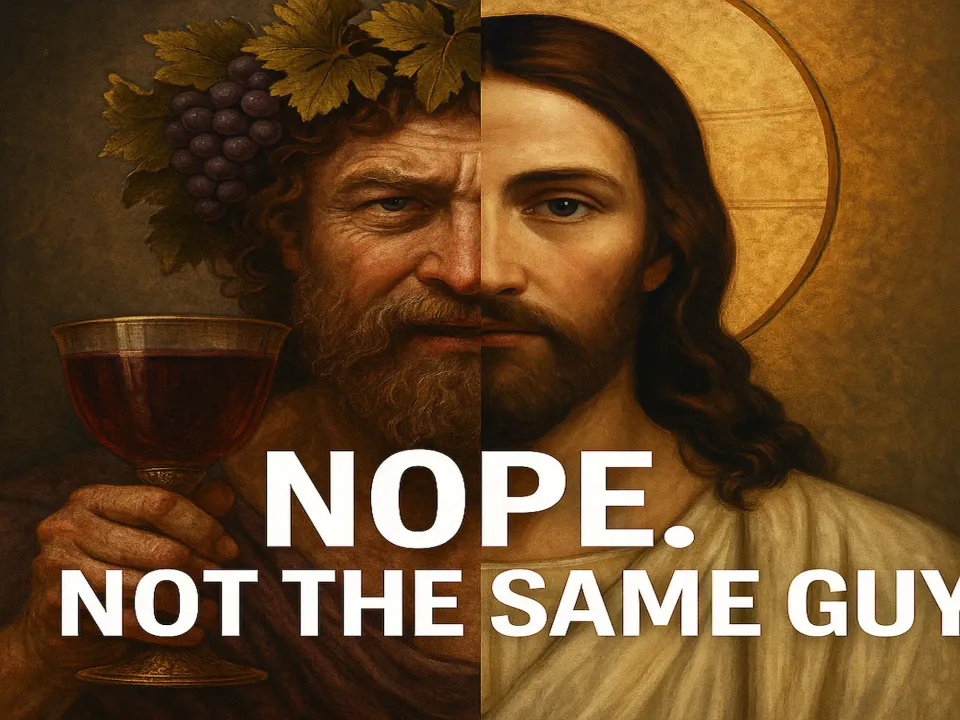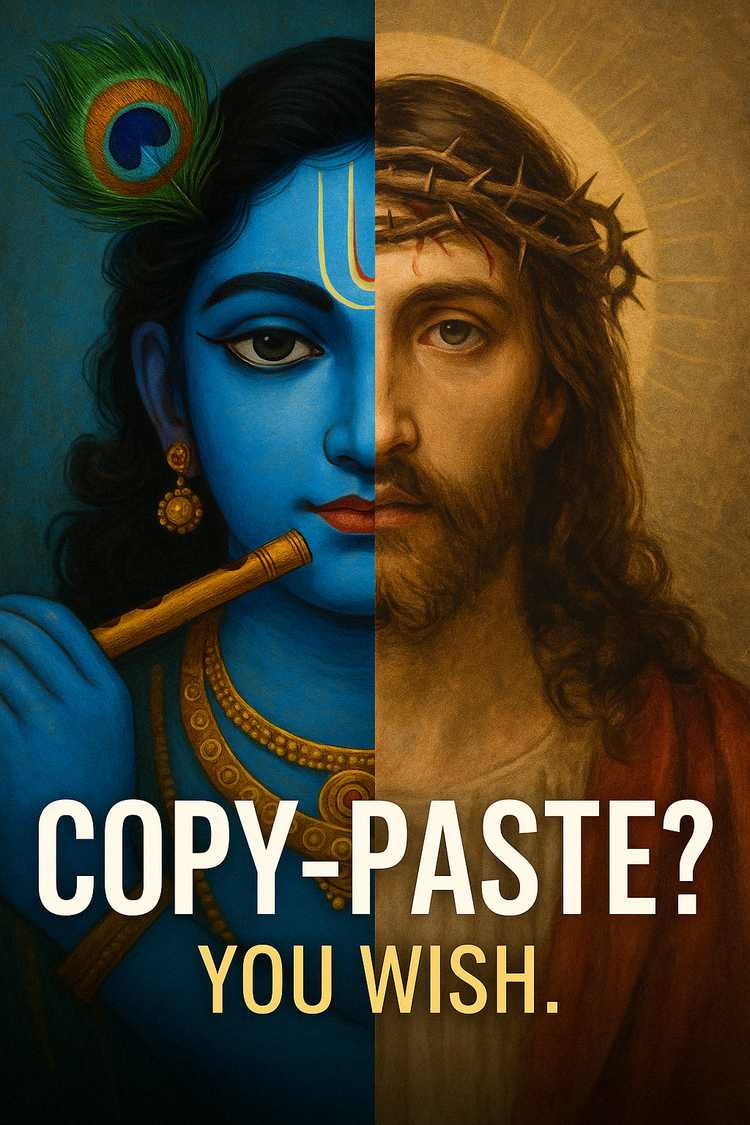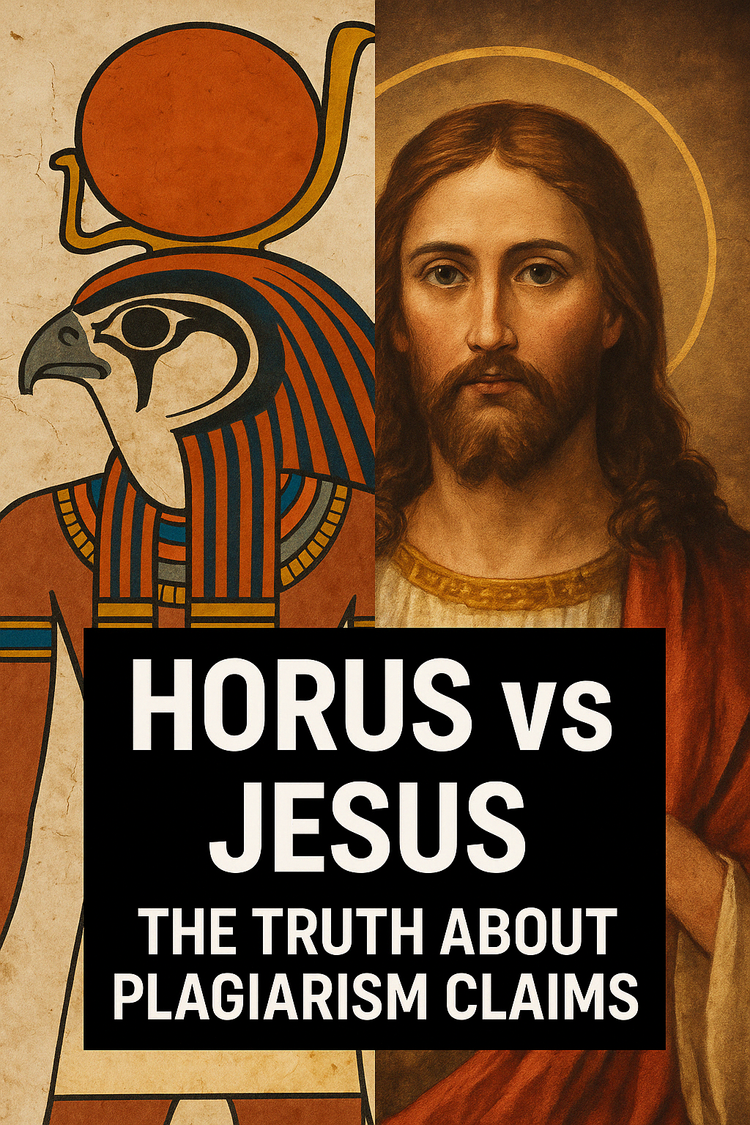Dionysus and Jesus: The Copycat Claim That Doesn’t Hold Water (Or Wine)

TL;DR
The claim that Jesus is just a rewrite of Dionysus is a modern myth built on half-truths, cherry-picked phrases, and zero primary sources. No virgin birth, no March 25 resurrection, no crucifixion. Dionysus liked wine, Jesus made wine—that’s about it.
Dionysus: God of Wine, Madness, and... Internet Memes?
Dionysus, also known as Bacchus in Roman mythology, was one of the most colorful figures in the Greek pantheon. As the god of wine, theater, fertility, and religious ecstasy, he was celebrated for breaking boundaries—between the divine and the mortal, between sanity and madness, between civilization and wild nature.
Worshipped across the ancient Greek world from at least the 8th century BCE onward, Dionysus inspired festivals like the Dionysia (which gave us Greek drama) and ecstatic rites involving music, dancing, and, of course, wine. His myths include his miraculous double birth, his journey to the underworld, and his transformation of followers into frenzied devotees.
While some internet theorists try to cast him as a prototype for Jesus, the comparison usually ends at “miracles” and wine. The deeper you look into the actual myths and texts, the less the story resembles anything from the Gospels.
Debunking Each Claim (Because Apparently We Have To)
1. Dionysus Was Born of a Virgin on December 25 and Placed in a Manger
Dionysus was the son of Zeus and the mortal woman Semele, conceived through an unmistakably non-virgin union (Fontenrose 112). There’s no virgin birth, and certainly no manger involved. Zeus had him some whatchacall "impulse control" issues.
December 25? Not even close. Ancient Greek sources don’t assign Dionysus a birthday, let alone tie it to a Roman winter solstice festival. (Muller 68).
2. Dionysus Was a Traveling Teacher Who Performed Miracles
Dionysus was associated with wine, ritual madness, and divine ecstasy—not with moral teachings or sermonizing. He didn’t preach; he partied.
His so-called “miracles” included transforming into animals, inducing frenzy, and, yes, creating wine—but let’s be specific: in myths like The Bacchae, rivers and fountains flowed with wine. He didn’t turn water into wine like Jesus at Cana; he made wine appear where water never was. It’s more about divine abundance than miracle chemistry. No sick healed, no dead raised, no baskets of bread multiplied—just some really enthusiastic party planning (Garstad 234).

3. Dionysus Rose from the Dead on March 25
There’s no ancient source stating that Dionysus died and rose on March 25. Some myths do feature his dismemberment by Titans and later reconstitution, but that’s not bodily resurrection—it’s mythical symbolism (Sayin 176).
Also, the earliest Christian texts place Jesus’ resurrection during Passover, not on a fixed March 25 date (Denny 103).
4. Dionysus Was Called "King of Kings," "Only Begotten Son," "Savior," "Redeemer"
These are Christian theological titles. There’s no record of Dionysus being called any of them.
His actual epithets include “Liberator” (Eleutherios) and “Twice-Born,” which refer to his birth mythology and ecstatic cult worship—not divine salvation in the Christian sense (Price 89; Grange 2006).
5. Dionysus Was Crucified or Hung on a Tree
Crucifixion? Absolutely not. There’s no ancient Greek account of Dionysus being crucified (Kratter 198).
Some Orphic mysteries depict Dionysus being torn apart by Titans, and some symbolic depictions link him to a tree, but this is spiritual metaphor—not Roman execution (Torabi 304).
No, he wasn’t pinned up with Roman nails, wrapped in rope, or super-glued to an olive tree. It was a mythic posture, not an execution method. Hanging from a tree in myth doesn’t mean “dying for humanity’s sins.” In this Dionysian context, tt means you’ve entered symbolic transformation, not a Jerusalem courtroom.
Some Orphic mysteries depict Dionysus being torn apart by Titans, and some symbolic depictions link him to a tree, but this is spiritual metaphor—not Roman execution (Torabi 304). Not to be confused with real resurrection, which this clearly isn’t.
Conclusion
The supposed parallels between Jesus and Dionysus collapse under even basic scrutiny. A god of wine, fertility, and ecstatic rites is not the prototype for a crucified Jewish rabbi preaching the Kingdom of God. The similarities are modern inventions built more from memes than manuscripts. It is all in the primary texts, or rather it 𝒊𝒔𝒏'𝒕 𝒊𝒏 the primary texts at all, which is the point.
Okay, I double-checked. Still not crucified.
Works Cited
Fontenrose, Joseph E. The Ritual Theory of Myth. University of California Press, 1966.
Garstad, Benjamin. “Hero into General: Reading Myth in Dionysius of Halicarnassus, Nonnus of Panopolis, and John Malalas.” Preternature, vol. 3, no. 2, 2014, pp. 227–249.
Grange, William. Review of The Longing for Myth in Germany. Digital Commons at University of Nebraska-Lincoln, 2006.
Kratter, Mark R. "Christ Follows Dionysus": Myth, Modernism, and the Mimetic Theory of René Girard. ProQuest Dissertations, 2000.
Muller, Lucian. The Greco-Egyptian Origins of Western Myths and Philosophy. PhilArchive, 2018.
Price, Robert M. Deconstructing Jesus. Prometheus Books, 2009.
Sayin, H. U. “The Consumption of Psychoactive Plants During Religious Rituals: The Roots of Common Symbols and Figures in Religions and Myths.” NeuroQuantology, 2014.
Torabi, Josh. Music and Myth in Modern Literature. Taylor & Francis, 2020.
Denny, Mark. The Bible and the Ancient Near East. Fortress Press, 2009.





Comments ()